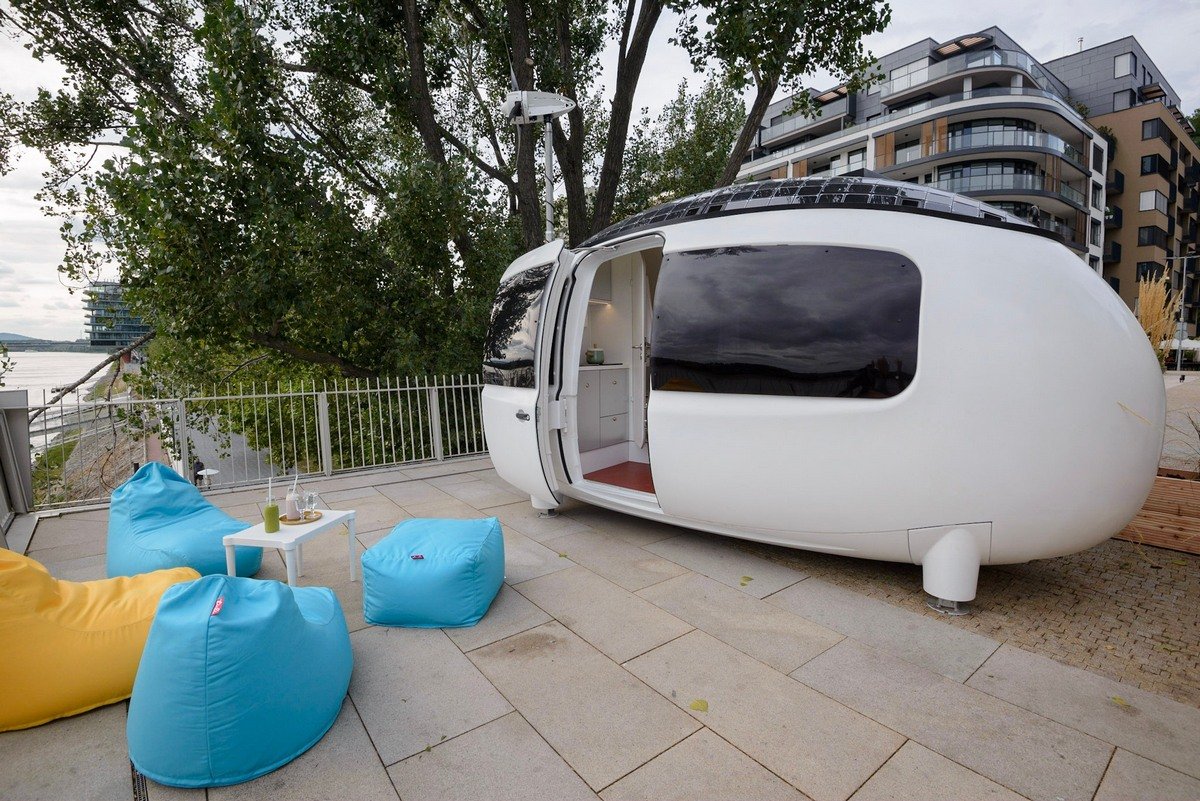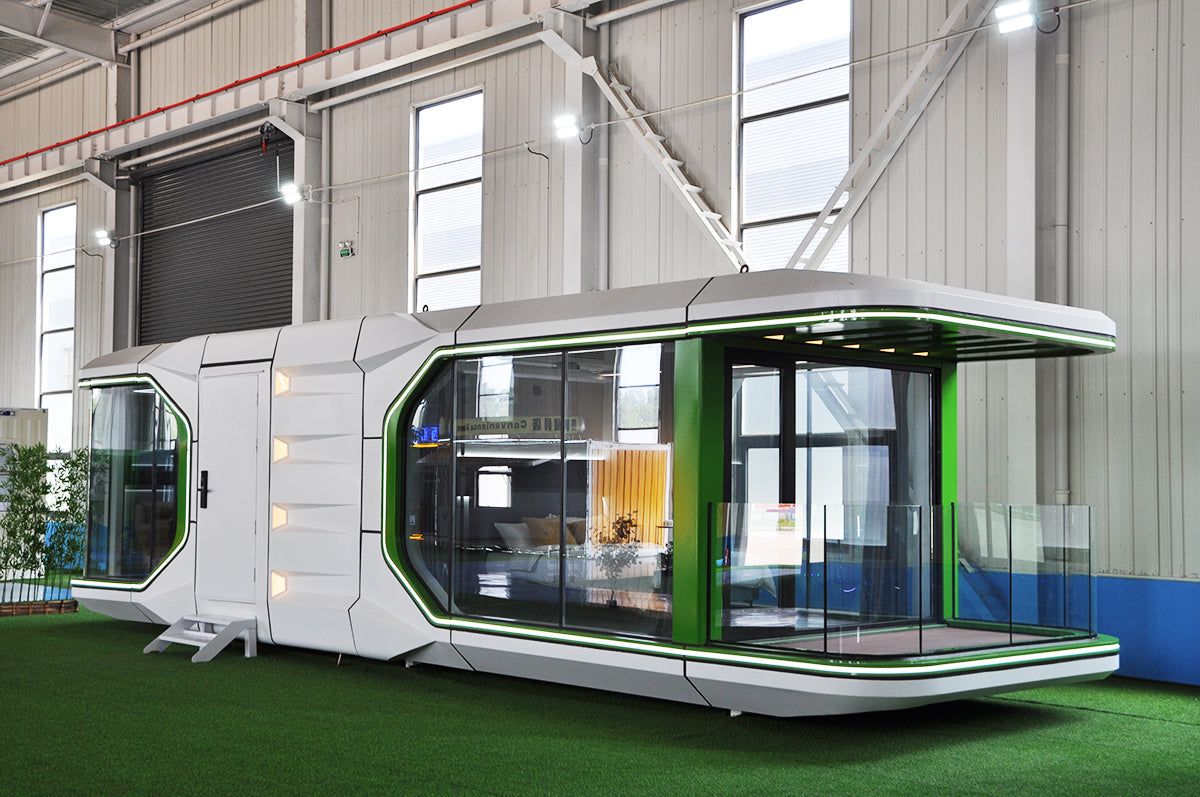The Rise of Capsule Homes Australia and Their Impact on Sustainable Living
Wiki Article
Effortless Homebuilding With Modern Modular Home Styles

Advantages of Modular Home Styles
Modular home layouts use many advantages that make them an appealing choice for several property owners. Among the primary advantages is cost-effectiveness. Due to the fact that modular homes are built in a factory setting, home builders can enhance the process, minimizing labor and product costs, which typically equates to decrease rates for customers.Furthermore, modular homes are known for their rate of building and construction. pod homes. The regulated setting of a manufacturing facility enables for reliable setting up, enabling home owners to move into their brand-new home much earlier than traditional building approaches would certainly allow
Energy performance is one more considerable advantage. Numerous modular homes are created with lasting products and energy-efficient systems, causing reduced energy bills and a reduced environmental impact.
Additionally, modular styles offer a high degree of personalization. Home owners can typically pick from different layouts, products, and finishes, ensuring that their home satisfies personal choices and way of life requirements.
Finally, modular homes are constructed to fulfill strenuous building codes and standards, making certain durability and security. Generally, the combination of affordability, rate, modification, high quality, and efficiency makes modular home layouts an attractive alternative for a wide variety of customers.
The Modular Building Refine
The modular building and construction process entails a methodical approach that considerably varies from traditional structure techniques. Each component is built with the exact same materials and criteria as a site-built home, including insulation, electrical wiring, and plumbing systems.As the components are created, the site preparation can take area simultaneously, consisting of structure job and energy installments. This parallel procedure significantly decreases the general timeline for completion. Once the modules prepare, they are delivered to the building website, where they are craned into placement and safely joined together.
The last phases entail finishing touches, such as exterior house siding, roofing, and interior describing. This structured approach not only decreases building and construction waste however additionally enhances energy effectiveness via well-coordinated structure techniques. In general, the modular building and construction process provides a faster, affordable, and eco friendlier choice to traditional home building.
Modification Options Available
Exploring personalization alternatives in modular home designs permits home owners to customize their living rooms to their one-of-a-kind choices and way of livings. Among the most attractive elements of modular homes is the versatility they supply in design and design. Property owners can choose from a selection of layout, ranging from open-concept rooms to much more conventional designs, making certain that the home fits their specific needs.Along with structural alterations, personalization includes visual aspects. Property owners can select from an extensive scheme of colors, finishes, and products, consisting of cabinetry, countertops, floor covering, and home siding. This degree of personalization allows homeowners to produce a natural design that mirrors their specific style.
In addition, modular homes can incorporate energy-efficient features and wise modern technology options. House owners can opt for photovoltaic panels, energy-efficient home windows, and advanced home heating and cooling systems, adding to both convenience and utility cost savings.
Lastly, several manufacturers provide the possibility to include distinct components, such as built-in shelving, custom-made wardrobes, or outside living spaces. This thorough series of personalization choices makes sure that modular home layouts can be as functional and unique as the families who inhabit them.
Sustainability in Modular Residences
Sustainability is an essential consideration in modern home structure, and modular homes are progressively designed with eco-friendly practices in mind. These structures decrease waste through reliable production processes, as components are produced in a regulated setting (pod homes). This not just lowers the amount of product disposed of throughout building yet additionally decreases the carbon impact connected with traditional building techniquesModular homes usually include sustainable products, such as reclaimed timber, recycled metal, and low-VOC paints, which contribute to healthier interior air high quality. Numerous layouts incorporate energy-efficient systems, consisting of solar panels, advanced insulation, and high-performance home windows, which lower energy intake and utility prices over time.
The modular building and construction method likewise permits for far better planning of power use and source administration throughout the structure lifecycle. By making pod homes use of prefabricated components, contractors can significantly decrease transportation emissions, as products are supplied in bulk to the site.
Additionally, the flexibility of modular homes enables for future upgrades, making certain that homeowners can change their living areas to include a lot more sustainable technology as it ends up being available. Overall, sustainability in modular homes stands for a forward-thinking strategy to environmentally responsible living.
Cost-Effectiveness of Modular Building
Modular homes not just prioritize sustainability yet additionally provide significant cost-effectiveness compared to standard construction techniques - pod homes. Among the main financial advantages is the reduction in labor expenses. Since a significant portion of the building procedure occurs in a controlled factory setting, labor efficiency is enhanced, leading to lower total expenses
Furthermore, the usage of standard products and styles lessens waste, leading to price savings that can be handed down to customers. The moment savings related to modular construction also add to its price; jobs can be completed in a portion of the time it takes for standard builds, enabling house owners to relocate quicker and begin benefiting from their financial investment.
Moreover, modular homes usually include energy-efficient functions, which can cause minimized utility expenses gradually, further improving their cost-effectiveness. Financing alternatives for modular homes are additionally coming to be much more positive, with lots of lending institutions identifying their value and security.
Final Thought
Finally, modern-day modular home styles offer a transformative strategy to homebuilding, identified by performance, modification, and sustainability. The structured building and construction procedure boosts quality and adherence to building codes while using house owners the possibility to personalize their living rooms. The incorporation of energy-efficient systems significantly lowers energy expenses and ecological impact. Inevitably, modular homes represent a forward-thinking service that resolves modern housing needs and promotes a more sustainable future in residential construction.
Report this wiki page